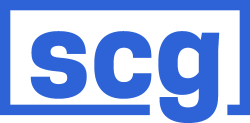If you are a small to medium-sized business owner looking to take your SuiteCommerce store to the next level, look no further! This blog post will explore the benefits of choosing a custom theme for your store and guide you through the key steps in maximizing its potential. We’ll also discuss finding the right developer for your custom theme and measuring its success. Get ready to stand out with a uniquely tailored SuiteCommerce store that captures attention and drives sales.
Why choose a custom theme for your SuiteCommerce store
A custom theme for your SuiteCommerce store allows you to enhance your brand identity and stand out from competitors. With a unique design that reflects your company’s values and aesthetics, you can create a memorable online presence that captivates customers and builds trust.
A custom theme for your SuiteCommerce store allows you to enhance your brand identity and stand out from competitors. With a unique design that reflects your company’s values and aesthetics, you can create a memorable online presence that captivates customers and builds trust.
By tailoring the user experience to your target audience, a custom theme ensures an intuitive and personalized shopping journey. From seamless navigation to visually appealing layouts, every element is optimized to engage visitors, increase conversions, and provide exceptional customer satisfaction.
With custom themes comes the advantage of optimizing performance and loading speed. By eliminating unnecessary features or applications that slow down your website, you can ensure faster page load times, reducing bounce rates and improving overall user experience.
Additionally, incorporating unique functionalities specific to your business needs sets you apart regarding usability. Whether adding beauty product customization options or integrating loyalty programs for returning customers, these customization possibilities allow you to cater directly to customer demands while boosting retention rates.”
Enhancing brand identity and differentiation
Customizing color schemes and fonts, incorporating brand logos and imagery, and creating unique page layouts are essential in enhancing brand identity and differentiation. By customizing these elements, you can create a visual experience that aligns with your brand’s personality and resonates with your target audience. This level of customization sets your store apart from the competition and establishes a strong sense of credibility and professionalism.
- Customizing color schemes and fonts to reflect your brand’s aesthetics
- Incorporating brand logos and imagery throughout the website for consistent branding
- Creating unique page layouts that showcase your products or services effectively
Tailoring the user experience to your target audience
Implementing personalized product recommendations is a powerful way to enhance the user experience for your target audience. You can showcase relevant products tailored to their specific needs and interests by analyzing customer data and preferences. This not only increases conversions but also fosters customer loyalty.
Adapting navigation menus for easy browsing ensures a seamless user experience. By organizing your menu options based on the preferences of your target audience, you can make it easier for them to find what they’re looking for and navigate through your website effortlessly. This results in increased engagement and satisfaction.
Optimizing search functionality is essential in helping users quickly find what they need. Incorporating advanced search filters, auto-suggestions, and intuitive search algorithms ensures that customers can easily locate desired products or information within seconds. Customizing the search functionality according to user patterns improves usability and overall satisfaction with the website’s performance.
Optimizing performance and loading speed
Minifying CSS and JavaScript files can significantly improve your applications’ performance and loading speed. Reducing the file sizes allows for faster downloads and improves overall website responsiveness. Compressing image sizes is another effective way to enhance loading speed, as smaller image files require less bandwidth. Additionally, enabling lazy loading of images delays the loading of non-visible images until they are needed, further optimizing page performance without sacrificing visual beauty or customer conversions.
Incorporating unique functionalities and features
Integrating social media sharing buttons allows customers to easily share your products or services on their favorite platforms, increasing brand visibility and driving more traffic to your store. Adding a customer review or rating system enables shoppers to make informed decisions based on the experiences of others, boosting trust and conversions. Implementing a live chat support feature provides immediate assistance to customers, enhancing their shopping experience and increasing customer satisfaction.
Finding the right developer for your custom theme

It is crucial to maximize your SuiteCommerce store’s potential. It starts with identifying your requirements and goals, ensuring the developer can meet them effectively. Researching and evaluating developers is also essential, looking beyond their portfolio to assess their capabilities and professionalism. Finally, checking for experience and expertise in SuiteCommerce guarantees that you choose a developer who understands the platform intricately, resulting in a seamless integration of your custom theme into your store.
Identifying your specific requirements and goals
Understanding your brand identity and aesthetic is crucial when identifying your specific requirements and goals for a custom theme. By aligning the visual elements of your store with your brand’s personality, you can create a cohesive and memorable shopping experience for your customers.
Defining the functionality you need for your store is another important aspect to consider. Whether integrating social media sharing capabilities or implementing advanced search filters, understanding the specific features that will enhance user experience will help drive engagement and conversions.
Determining any unique design or layout elements you want to incorporate sets you apart from competitors. From interactive product galleries to personalized checkout pages, incorporating custom design elements tailored to your brand vision adds sophistication and professionalism to your SuiteCommerce store.
Researching and evaluating developers
Reading reviews and testimonials from previous clients can provide valuable insights into a developer’s performance and customer satisfaction. Look for consistent positive feedback highlighting their professionalism, expertise, and ability to deliver quality work on time. Additionally, checking their portfolio of past work allows you to assess if their style aligns with yours and if they have experience developing custom themes for SuiteCommerce. Lastly, consider the developer’s communication skills and responsiveness as effective collaboration is crucial throughout development. Ensure they promptly respond to inquiries and communicate clearly to avoid miscommunication or delays.
Checking for experience and expertise in SuiteCommerce
Verifying a developer’s experience and expertise in SuiteCommerce is crucial to ensure the success of your store. When evaluating potential developers, consider the following:
- Knowledge of SuiteCommerce platforms like SuiteCommerce Advanced (SCA)
- Certifications or training related to SuiteCommerce development
- Successful projects completed using SuiteCommerce
By asking about these aspects, you can determine if a developer has the necessary skills and experience to create a custom theme to maximize your SuiteCommerce store’s potential.
Key steps in maximizing your SuiteCommerce store with a custom theme
Defining your brand’s visual identity and style guide is crucial in maximizing your SuiteCommerce store with a custom theme. You can attract and engage customers effectively by creating a cohesive, visually appealing design that reflects your brand.
Creating user-friendly and intuitive navigation is another key step. By logically organizing your website’s content, implementing clear menus, and providing easy-to-use search functionality, you can enhance the overall user experience and make it effortless for customers to find what they are looking for.
Defining your brand’s visual identity and style guide
Choosing the right visual elements for your brand is crucial in creating a strong and consistent identity. Here are key considerations when defining your brand’s visual identity and style guide:
- Choose a color palette that reflects your brand’s personality
- Select fonts that are both legible and align with your brand image
- Design a logo that represents your unique value proposition
These elements will help differentiate your brand from competitors and leave a lasting impression on customers. By carefully selecting colors and fonts and designing an impactful logo, you can effectively communicate the essence of your brand to potential customers.
Creating a user-friendly and intuitive navigation
Organizing products into logical categories for easy browsing is essential in creating user-friendly navigation. By grouping similar products together, customers can easily find what they need and navigate your store effortlessly. Implementing filter search functionality further enhances the browsing experience by allowing customers to narrow their options and quickly find specific items. Clear calls-to-action strategically placed throughout the website guide users through the purchasing process, ensuring a seamless and intuitive navigation experience.
- Organize products into logical categories.
- Implement search functionality with filters
- Include clear calls to action throughout the website
Optimizing for mobile responsiveness
Ensuring an optimal mobile experience involves ensuring all website elements adapt seamlessly to different screen sizes. Whether it’s text, images, or interactive features, they should resize and reposition themselves accordingly for easy viewing on smaller devices.
Simplifying the checkout process is crucial for mobile users. Reducing steps and form fields can minimize friction and increase conversion rates. Streamlining the process with clear instructions and minimal data entry will help keep customers engaged until the final transaction.
Responsive images and optimizing page load speed are essential for better mobile performance. Large image files can significantly slow down your site on mobile devices, leading to poor user experience. Implementing responsive images that automatically adjust their size based on screen resolution will improve loading times without compromising visual quality, ensuring a smooth browsing experience for your visitors.
Utilizing SEO best practices
Performing thorough keyword research is essential for boosting your SuiteCommerce store’s visibility. By identifying the relevant terms customers are searching for, you can strategically incorporate these keywords into your page titles, headers, URLs, and meta descriptions. This will help search engines recognize the relevance of your content and improve its ranking.
Generating high-quality content that includes targeted keywords is crucial to further enhance your SEO efforts. Creating informative blog posts and captivating product descriptions with carefully chosen keywords will attract more organic traffic and enhance the overall user experience on your website. These SEO best practices can increase visibility and drive more qualified leads to your SuiteCommerce store.
Implementing personalized product recommendations
- Enhance customer experience by implementing personalized product recommendations based on their browsing and purchase history. This tailored approach increases the likelihood of conversions and boosts customer satisfaction.
- Utilize advanced algorithms and machine learning techniques to analyze user behavior, preferences, and demographics. By leveraging this data, you can deliver targeted suggestions that align with each individual’s interests and needs.
Integrating social media and customer engagement features
Integrating social media and customer engagement features allows you to connect with your audience more deeply. By incorporating social sharing buttons, customers can easily share your products or services with their friends and followers, increasing brand exposure. Additionally, implementing live chat functionality enables real-time communication and personalized support, enhancing the overall customer experience.
Ensuring a seamless checkout process
Streamlining the checkout process is essential for a seamless customer experience. Minimize the number of steps required to complete a purchase, ensuring that customers can easily enter their information, select shipping options, and make payments without unnecessary delays or complications. Implementing trusted payment gateways and offering multiple payment options will also help to instill confidence in your customers and increase conversion rates.
Measuring the success of your custom theme implementation

It involves monitoring website traffic and user behavior. You can track the number of visitors, pages visited, and their interaction with various elements on your site using analytics tools. This data provides valuable insights into how well your custom theme engages users and attracts traffic.
In addition to tracking website performance, measuring conversion rates and sales performance is essential. Analyze key metrics such as click-through rates, add-to-cart rates, and average order value to determine if your custom theme effectively drives conversions. By continually monitoring these metrics, you can identify areas for improvement to maximize sales potential.
Furthermore, gathering customer feedback plays a crucial role in measuring the success of your custom theme implementation. Conduct surveys or collect customer reviews about their experience using your site with the new theme. Their input will enable you to understand any pain points or areas where enhancements are needed.
Ultimately, by utilizing data-driven insights gained from analyzing website traffic patterns, conversion rates/sales performance tracking, and customer feedback collection, you can make informed decisions regarding improvements or optimizations needed to maximize the effectiveness of your SuiteCommerce store implementation.
Monitoring website traffic and user behavior
Implementing Google Analytics is crucial for monitoring website traffic and user behavior. With the right setup, you can track valuable data, such as bounce rate and time on the page, to measure user engagement. Monitoring click-through rates and navigation patterns also provides insights into how users interact with your website.
- Implement Google Analytics to track website traffic
- Analyze bounce rate and time on the page for user engagement
- Monitor click-through rates and navigation patterns
Tracking conversion rates and sales performance
Setting up tracking pixels for advertising campaigns allows you to measure your ads’ performance and effectiveness accurately. By analyzing cart abandonment rates, you can identify areas where customers are dropping off in the purchasing process and make necessary improvements to increase conversions. Tracking average order value helps optimize upselling strategies by understanding how much customers are willing to spend and tailoring your offers accordingly.
Collecting and analyzing customer feedback
Using surveys and feedback forms is an effective method to gather customer opinions and understand their needs and preferences. By directly asking customers for their feedback, you can gain valuable insights into their satisfaction levels, areas of improvement, and new product ideas.
Analyzing product reviews provides a wealth of information about customer preferences. By carefully examining the language and sentiments expressed in these reviews, you can identify patterns and trends that will help you better tailor your products to meet customer expectations.
Engaging with customers through social media channels allows for direct feedback from your target audience. By actively listening to what they say on platforms like Facebook or Twitter, you can quickly address any concerns or suggestions they may have, fostering a strong relationship built on trust and open communication.
Making data-driven improvements and optimizations
A/B testing different design elements allows you to identify which changes impact conversion rates most. By comparing two web page versions, you can determine which design variation drives more conversions and make data-driven decisions to optimize your site for better results.
Optimizing page loading speed reduces bounce rate and improves user experience. Slow-loading pages frustrate visitors and discourage them from staying on your site. By optimizing your website’s performance, you can keep users engaged and increase the likelihood of conversion.
Personalizing the shopping experience based on customer data enhances engagement and encourages repeat purchases. By leveraging customer information such as past purchase history or browsing behavior, you can provide tailored recommendations, relevant promotions, and personalized content that resonate with individual customers’ preferences.
These strategies will help maximize the potential of your SuiteCommerce store by making data-driven improvements and optimizations that positively impact conversion rates, user experience, and customer loyalty.
Conclusion
Taking Your Business to the next step can only become a reality if you have the expertise to deliver outstanding solutions. At Seibert Consulting Group, we provide modern solutions to businesses that fully utilize the NetSuite ERP, SuiteCommerce, Shopify, and BigCommerce eCommerce platforms. We always customize our solutions to meet Your Business’ requirements and goals. Let’s start talking about your project and find out how we can help Your Business grow. Contact us via our chatbot or email at hello@seibertconsulting.com and via our direct line at 760-205-5440.




